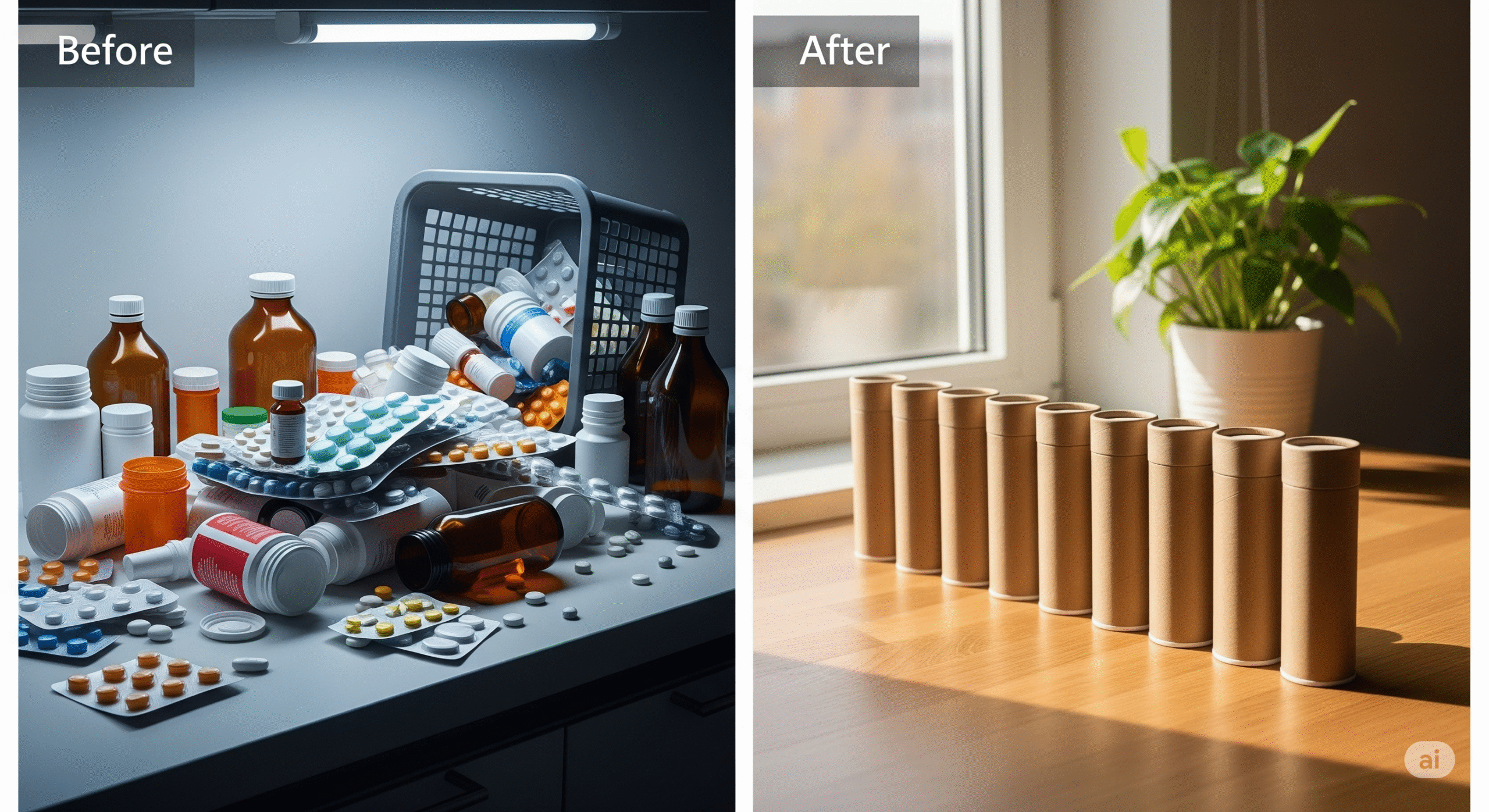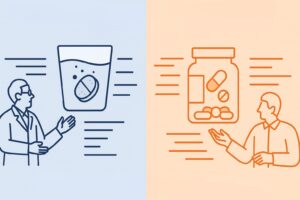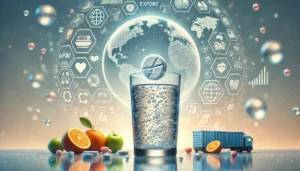Introduction
In hospitals, clinics, and pharmacies around the world, plastic is everywhere stacked in shelves, lining cabinets, tossed in bins. Healthcare, while life-saving, is also one of the world’s most plastic-intensive industries. From pill bottles to blister packs, the sector churns out hundreds of billions of plastic units each year, most of them single-use and non-recyclable.
This plastic tide is more than just wasteful. It undermines the same public health the industry is built to protect, contributing to pollution, climate change, and strained waste management systems.
But a quiet revolution is fizzing beneath the surface.
Effervescent tablets, those compact, water-soluble wonders are offering a smarter, greener alternative. By slashing packaging volume, embracing recyclable materials, and improving shelf life, they’re helping healthcare systems cut down on plastic waste at every link in the supply chain. This isn’t just a packaging tweak, it’s a rethink of how medicine can be delivered sustainably, without sacrificing efficacy.
II. Compact & Eco-Friendly Packaging
When it comes to reducing waste, size matters and effervescent tablets are winning on that front. Unlike bulky pill bottles or hard-to-recycle blister packs, these tablets are typically packaged in slim, moisture-resistant tubes. The result? Less plastic used per dose, and dramatically more efficient storage and transport.
But the sustainability edge doesn’t stop at size.
Many manufacturers are now shifting from conventional plastics to bio-based or biodegradable alternatives, think corn starch, sugarcane, or other renewable sources. These materials not only lower reliance on fossil fuels but also cut carbon emissions and break down more easily after use.
It’s a small change with big implications: when multiplied across hospital systems, pharmacies, and global distribution channels, this compact, eco-conscious packaging could significantly curb the sector’s plastic footprint.
III. Designed for Recycling & Product Longevity
Effervescent tablet packaging isn’t just smaller, it’s smarter.
The tubes used are often made with recyclable materials that are intentionally engineered to integrate with existing recycling systems. Unlike composite or multilayer pill packs, which often end up in landfills, these containers are more likely to make it through the recycling loop and back into the material stream.
But sustainability isn’t just about disposal it’s about durability too.
Effervescent tablet tubes are designed to be airtight and highly moisture-resistant. That means medications stay potent longer, reducing spoilage and the need to toss out expired or degraded drugs. Less waste, fewer replacements, and a longer shelf life all add up to one thing: a leaner, cleaner supply chain.
By protecting the product and simplifying its end-of-life, these packages help close the loop between use and reuse, a key tenet of the circular economy.
IV. Bulk Efficiency and Waste Reduction
Effervescent tablets aren’t just eco-friendly in form, they’re efficient in function.
Thanks to their stable, concentrated formulations, these tablets can deliver high doses of active ingredients in a single unit. That makes them ideal for bulk distribution, particularly in clinical settings where speed, scale, and storage matter.
This bulk potential directly reduces the need for multiple small-format packages, which are often plastic-heavy and used once before being discarded. Fewer individual containers mean less plastic in circulation, fewer shipping materials, and less energy spent on transport.
And the benefits stack.
By streamlining dosage and distribution, effervescent tablets help minimize over-packaging, cut down on handling waste, and reduce the carbon costs associated with frequent restocking all without compromising patient care.
In short: more medicine, less material.
V. Innovations in Manufacturing
Behind every effervescent tablet is a smarter production line and it’s changing how sustainable healthcare is built.
Advancements in granulation and compression techniques now allow manufacturers to create tablets that are both compact and chemically stable, reducing the need for bulky protective packaging. These innovations maintain product integrity while using fewer resources, a critical balance in both medical efficacy and environmental impact.
Manufacturers are also optimizing production to minimize material waste from the outset. By fine-tuning formulas and packaging workflows, they’re able to produce less excess plastic, cut down on storage space, and streamline logistics across the board.
This isn’t just efficiency for efficiency’s sake. It’s a rethinking of the pharmaceutical supply chain one that prioritizes sustainability without sacrificing performance.
VI. Broader Environmental Applications
Effervescent tablets are making waves beyond the medicine cabinet.
In healthcare settings, they’re also being used to replace harsher, plastic-heavy chemical cleaners. Hospitals and clinics are turning to herbal or low-toxicity effervescent disinfectants that come in compact, dissolvable tablet form eliminating the need for large plastic jugs of liquid solutions.
This shift doesn’t just reduce packaging waste it lowers chemical runoff and creates safer working environments for staff and patients alike.
Even more compelling? Effervescent formulations align with healthcare’s broader push toward climate accountability. As hospitals and health systems work to cut emissions and waste, these low-impact solutions support circular economy principles where products are designed to be reused, recycled, or repurposed instead of discarded.
In this context, effervescent tablets are more than a sustainable choice; they’re a strategic tool for future-focused healthcare systems.
VIII. Key Takeaways
- Less single-use plastic: Effervescent tablets rely on compact, tube-style packaging that significantly reduces plastic waste per dose.
- Sustainable materials: Increasing use of bio-based, recyclable, or biodegradable plastics helps cut reliance on fossil fuels and lowers the sector’s carbon footprint.
- Longer shelf life: Airtight, moisture-resistant tubes protect medication from spoilage, reducing unnecessary waste.
- Bulk delivery, less packaging: Stable, concentrated formulations support bulk distribution, minimizing the need for excess packaging and shipping materials.
- Eco-friendly beyond medication: Effervescent formats are also being used for greener hospital cleaning products, replacing harsher, plastic-heavy chemicals.
Supports the circular economy: Designed with recyclability and longevity in mind, effervescent tablets align with broader healthcare sustainability strategies.
Frequently Asked Questions
1. How do effervescent tablets reduce plastic use in medicine?
Effervescent tablets are typically packaged in compact tubes that use significantly less plastic than traditional pill bottles or blister packs. Their concentrated formulations also allow for bulk distribution, further minimizing the need for excess packaging.
2. Are effervescent tablets more eco-friendly than traditional pills?
Yes. Effervescent tablets not only use less plastic per dose, but their packaging is increasingly recyclable or made from bio-based materials. They also contribute to less medication waste due to longer shelf life and improved product stability.
3. Can effervescent tablet packaging be recycled?
Most effervescent tablet tubes today are designed to be recyclable and compatible with standard recycling systems. Some manufacturers are also adopting biodegradable or compostable materials to enhance sustainability.
4. Why is healthcare moving toward effervescent formulations?
Effervescent tablets support sustainability goals by reducing packaging waste, cutting carbon emissions, and aligning with circular economy principles. They also offer practical benefits like easier administration and longer shelf stability.
5. What materials are used in sustainable effervescent tablet packaging?
Eco-conscious packaging materials include recyclable plastics, bio-based polymers made from



